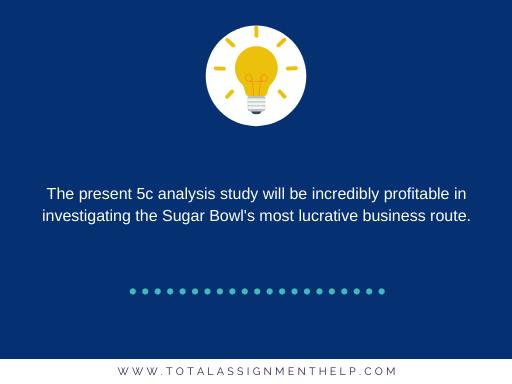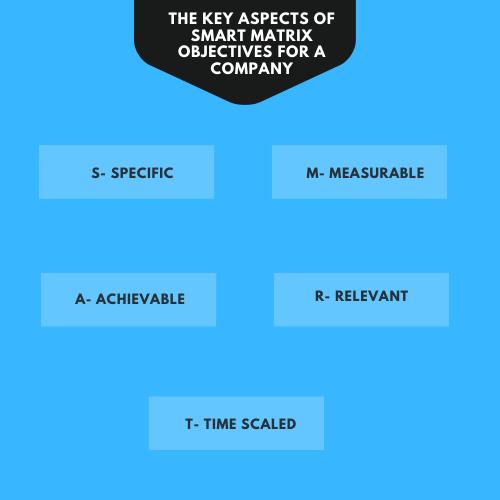5c Analysis
Question
Task: Analyze the Sugar bowl case study and discuss marketing mix proposition for the business, according to its current scenario using 5c analysis
Answer

Introduction
On the premise of the Sugar Bowl test case, the present paper will concentrate on discussing different marketing 5c analysis activities of the bowling arena. Sugar Bowl is a commercial company owned by Shelby Givens which is family-owned. The company was profoundly ingrained in the bowling business tactics of the 70s. In this role, Shelby Givens has driven a range of visionary strategies aimed at ensuring the organization's stability and sustainability. A substantial amount of recognition and also eventual expansion has been generated by the modernization of the company. Even so, considering the potential of the company, the consumer engagement continues to fluctuate. In order to ensure the survival of the organization, many corrective steps have been incorporated. The present 5c analysis study will be incredibly profitable in investigating the Sugar Bowl's most lucrative business route. The research problem of the Sugar Bowl has been presented in an eloquent manner in an attempt to discover the most acceptable marketing strategy through 5c analysis for the business. The objective of the research is to conduct the 5c analysis. With the assistance of SWOT analysis, the study is also oriented to resolve the firm's competitive advantage. In addition, the 5c analysis will be able to discuss the business's customer segments, including an efficient description of the target assertion. The targets are evaluated using the SMART matrix model. Finally, the paper suggests the marketing combination tactics through 5c analysis that Sugar Bowl can use to be successful.

Research question:
Sugar Bowl's dilemma is to determine, under the pressure of decreasing profit potential, whether it should stay with the company and join the community proposed by Given's former classmate in New York or to sell the land to the venture capitalist for $1 million.
5c analysis for Sugar Bowl
5c analysis involves consumer, company, competition, collaborator and context analysis. 5c analysis will assist Sugar Bowl and Givens to determine a marketing move for the company's future. Under the existing situation where Givens has been unable to determine what to do about Sugar Bowl, if she chooses to proceed with her business, 5c's of marketing would help her make the right call and develop well-defined marketing strategies and campaigns (Zenker & Beckmann, 2012). The bowling business has been at a peak in the U.S. throughout the late 1950s (Grasso, Mallon, & Heijmans, 2015). The growth of the game has, however, recently decreased thanks to the shortage of bowling tournaments and adequate media advertising (Blythe & Martin, 2019). Although by splitting it into two sections, most bowling circuits have improved their revenue. Givens followed the same 5c analysis methodology as with bowling activities, as well as introducing a full bar centre alongside meals such as burgers and nachos. Moreover, the service was provided for leisure affairs on weekdays. Sugar Bowl has started experiencing both young clients and adult clients in their centre, which is a positive sign. Lately, although the amount of people is declining, the truth is it does not concern Givens. The spot in which the Sugar Bowl is located was somewhat remote. The site has newly seen the launch of a food and wine restaurant and an arts centre that demonstrates that the region is flourishing gradually. Thus the possibility exists that the place would be a suitable location for an enterprise such as bowling in the coming years. In order to acquire a practical 5c analysis of Sugar Bowl, the corporation's vision, strategy, capabilities, line of products, philosophy and goals must be defined.

Vision: The organization is focused on an ambition to make it among the city's most famous bowling locations through the use of 5c analysis.
Strategies: Givens has introduced 5c analysis tactics such as lounge amenities, special family seating arrangements, individuals and parties, personal activities, and popular items such as burger and sandwich. It clearly shows that the company lacks effective tactics since most of the bowling establishments have the same approach, so Sugar Bowl has little individuality and strategic edge.
Capabilities: With the sluggish yet steady development of the neighbourhood, Sugar Bowl does have the potential to bring more cash into their marketing and promotions approaches. Bowling underneath the headlights of football and rugby is completely out of style across the U.S. Givens would also have to contemplate introducing additional stuff to Sugar Bowl, including dance square, larger bar service facilities, and game parlours as part of their changes through 5c analysis.
Collaborators: Presently, under the cooperation of the Lakewood community and a bank, the company has collaborated to permit Givens to get a $400,000 loan.
Competitors: Sugar Bowl is successfully implementing in an area that is fully competitor-free. There really is no establishment for bowling in the area. A snack store and an arts centre that also sells alcoholic beverages to adults have opened, but it is not possible to regard them as rivals.
Climate: The Sugar Bowl environment, which involves macro-environmental determinants challenges, economic challenges, social implications and technological advances, is not adequately accommodating. The closest comparison that does not create any detrimental effect on the organization is political influences. But on the other side, the financial dilemma is widespread as Givens bears a $400,000 loan obligation on her hands as consumer fluctuations deprive her of enough profits. The social development concern is that the mean age of existing citizens is rising in the town; hence, day in day out, the volume of consumers who are ready to drop a sweat in the arena is declining. As for technical advancement, Sugar Bowl only has a single operator to watch after the bowling alleys that cost Givens $26,000 when multiple alley machinery failed, and Gary was on holiday, who is the only operator.
SWOT analysis
Via the SWOT review, Givens will be able to appreciate her company's existing advantages alongside prospects, vulnerabilities and risks.
Sugar Bowl SWOT analysis
Strengths
As evident from the 5c analysis lack of rivalry in its present market position is the predominant strength of the company. Since no other venues and recreational places sell their goods for bowling, Sugar Bowl has put a distinctive style of mixed leisure possibilities inside their building. In addition, Sugar Bowl also lets people hold private activities in the building on Thursday nights, and that is another interesting choice in their business strategy.
Weakness
The key disadvantages of the company are fewer partners and restricted assets of staff and food items. In addition, their specific choice of providing the facility just for personal affairs on Thursday nights can also be deemed a hazard if no such event occurs. It is possible that the potential of consumers is as low as 15 per cent throughout those two days of a week, but it at least provides some kind of revenue. On the other hand, the revenue would become nil if no private event occurs throughout those days.
Opportunity
A snack store and arts centre has opened up just across from Sugar Bowl, which will undoubtedly draw adults and children consumers. If they introduce a partnership strategy with these companies, it will assist Sugar Bowl to increase sales. For instance, bonus vouchers and special offers which could be used in Sugar Bowl can allow Givens to connect with customers from those two firms. As identified through the 5c analysis Sugar Bowl can also provide its current customers with the same deals in this situation, though, so that those companies will also benefit from it. In addition, the more new companies occupy the region, the more likely Sugar Bowl is to be able to develop its brand image.
Threat
The biggest threat to Sugar Bowl is its present state, which is unpredictable as a consequence of the number of consumers fluctuating. As seen in the 5c analysis, the regional population's average age is already high; thus, they won't devote themselves to a location that relies primarily on games such as bowling.

Market segmentation of Sugar Bowl
The key variables that'll be identified are demographic, regional, psychographic and behavioural patterns when discussing the Sugar Bowl consumer market (Mason, Kjellberg, & Hagberg, 2015). The organization currently focuses primarily on local communities, predominantly young and middle-aged individuals, as the company's core commodity is linked to sports that elderly folks do not enjoy. As the firm's location also has facilities for families to cherish food and drinks, citizens are also targeted by the organization. In addition, bowling is often a fantastic game for youngsters, so parents might also enjoy spending a lot of time there (Salwa & Sudarsan, 2018). As the cost of the service is not greater, middle-class households may also appreciate their time in the Sugar Bowl. As for psychographic segmentation, companies often aim to attract individuals who are able to spend time practising games.
In addition, the presence of beer often encourages the modern lifestyle of individuals. The key problems occur when behavioural segmentation is identified, in which only potential buyers have been attracted by the organization (Dibb & Simkin, 2016). Some of the clients do not return to Sugar Bowl for other reasons, despite the introduction of private celebration facilities. Thus it is vital that Givens must introduce new approaches and instruments to allow Sugar Bowl to draw prospective consumers as well.
Outlining the objectives of the organization
In this section of the 5c analysis, it is necessary to focus attention on explaining the priorities of this organization after addressing some other facets of this case situation. It has been shown that this organization's leadership has struggled to hold on to their trends in the market despite rejuvenating from the previous corresponding period. Therefore in order to alter the current situation, they are expected to concentrate on these goals. After completing the full 5c analysis study, it was found that at a certain point when the organization has no potential purpose and so they are forced to formulate the goals on a yearly basis (Barca, McCann, & Rodríguez?Pose, 2012). Initially, the company is largely forced to cope with the volatility of customers; else, the organization will not be able to retain on to the market place. A variety of new business management approaches are the key priorities for the company. The T.V. coverage of the bowling competitions must be initiated by the association. Ultimately, this would offer a greater outlet for prospective clients alongside attracting customers. The members of the bowling events will be strongly drawn to the bowling competition, and the consumer attendance at the bowling alley will inevitably be increased in a substantial way (Rinallo & Golfetto, 2006). The modes of interactive family entertainment need to be changed. In addition, to sustain the attractiveness of consumers in the competitive market, the company would need maximum technical assistance. It has been observed through the 5c analysis that in order to preserve the perception at the period of bowling, the company would have to create a range of innovative special deals. The SMART objectives of the company are as follows:

S – SPECIFIC
The goals are unique, and the company would be able to deal with the challenges of the targets in a different manner. The strategies to improve the targets are very clear, so the goals can be regarded as precise.
M - MEASURABLE
The goals are also quantifiable as the company will be able to calculate the results with the increasing improvement of the whole bowling centre's output. Customer reviews would be immensely beneficial in evaluating the accomplishment of the targets.
A - ACHIEVABLE
The target is realistic as the bowling arena's community areas are constantly thriving. In order to achieve the goals, the growth of the consumer base would play a bigger role.
R - RELEVANT
The priorities are rather necessary as it is noticed in different bowling salons that the innovative ideas are rather efficient to raise and sustain customer interest with utmost effectiveness.
T-TIME SCALED
Clearly, the targets are time-scaled, since the goals would be reached within a span of time. For an indefinite period of time, new ideas together with accompanying success would not be anticipated. Within a specific time scale, the company will calculate the accomplishment and the achievement reached will be time-scaled.
Describing the company's recommended marketing mix approach
They need to concentrate intensely on the 5c analysis marketing strategy, as this will allow the business to stay ahead of the competition. They are originally expected to concentrate strongly on the service. In order to increase the awareness of a large number of people, it can be proposed that the company needs to build a gaming parlour and dance centre. In addition, it can be proposed that Sugar Bowl is expected to employ a relatively big space to further grow its business. In addition, the food menu items for consumers need to be increased (Tuten, 2008). As evident through the 5c analysis, it is important to add multiple kinds of snacks, side dishes and desserts to the list of this association so that more people prefer to visit this location. Location is the second overall where the corporation's leadership is expected to concentrate specifically on (Cravens & Piercy, 2006). The business is expected to employ large places with the aid of accumulation of capital, where they'll be able to open the new game parlour and build a new dance centre with all the new amenities. Gronroos,( 1990) has claimed that the position in the marketing strategy relates to the point of service and the main goal of the company is to draw consumer interest and make it easy for people to purchase in any sector. Cost is the third biggest factor as seen from the 5c analysis, which the business must focus, as it relates to the value imposed on the commodity. It's already been shown that the leadership concentrated profoundly on reconstruction and controlling the price in the second phase. It would not be satisfactory, however, and it is therefore recommended that the company concentrate on pricing strategy. The manager is required to distinguish the price according to the group of clients, the period of delivery of the service, the quality of the goods purchased, and also the preferences and desires of customers, based on the detailed market analysis (Zou, Fang, & Zhao, 2003). In addition, one of the key takeaways from the 5c analysis is to switch to the online phase, the entire operating plan is necessary, as most organizations currently operate online. To take online orders, monitoring customer's ordered goods, is important, and it should upgrade it to attract the attention of potential customers alongside current customers (Cateora, Meyer, Gilly, & Graham, 2020).
Reconcile any consequences for the execution of the strategy described
Sugar Bowl is expected to integrate the strategies described in the business model, and this section will be of sincere significance to this portion. Zou, Fang, & Zhao (2003) observed that considering the personal nature of communication among producers and consumers in any sector, first-degree market manipulation is a prevalent phenomenon in existing businesses. It can be shown from the 5c analysis that some consumers choose to pay exorbitant prices because they have incomplete price allocation data or cannot possibly turn to a replacement in the short term. It should, however, be noted that customers will become fully conscious of the fact that if the prices charged fall in the actual price range, adjustments could be prompted, which can influence their purchasing behaviour (Hanson & Yuan, 2018). It can also be claimed from the 5c analysis that the management of the company is expected to concentrate honestly on these components at the period of comparing the benefits to catch the interest and stream of potential customers. Afterwards, Sugar Bowl is recommended to be using the segregation of the second degree, where based on the quantity purchased, they will have varied prices. If it is seen that shoppers are purchasing large quantities, they need to promote them by offering fewer facilities or sale possibilities for some cash (Mason, Kjellberg, & Hagberg, 2015). It will allow clients to come to this store. In addition to these two methods, management is recommended to not use third-degree differential pricing, as this will include various classes such as teachers, office workers, peak travellers and several more (Malshe & Agarwal, 2015). Other pricing techniques that the business is recommended through the 5c analysis in this situation to get more potential customers are extra amenities on the weekdays and weekends independently. The company will be helped to thrive from the current situation by implementing these techniques.
Conclusion
It can be inferred from the above-mentioned 5c analysis study that potential prospects are strong for Sugar Bowl if the suggestions can be implemented properly. The institution's neighbourhood is slowly but surely thriving as new enterprises and corporations reach the market. As the possibilities increase, this will draw members from various places to move and remain in the city. In addition, the current trend reveals that citizens are already being drawn to home gaming. Bowling is an in-house activity, and it is clear that the client volatility would reduce if the authorities will introduce gaming parlours. At the end of this 5c analysis, it can be assumed that Givens should not sell the store to the buyer and therefore, must stay three more years. Also if she supports the community suggested by her former classmate, it is also shown that she would also be able to advertise the location outside the city, which is yet another excellent experience for the business.
References
Barca, F., McCann, P., & Rodríguez?Pose, A. (2012). The case for regional development intervention: place?based versus place?neutral approaches. Journal of regional science, 52(1), Barca, F., McCann, P., & Rodríguez?Pose, A. (2012). The case for regional development interven134-152.
Blythe, J., & Martin, J. (2019). Essentials of marketing. Pearson UK.
Cateora, P., Meyer, R. B., Gilly, M. C., & Graham, J. L. (2020). International marketing. McGraw-Hill Education.
Cravens, D. W., & Piercy, N. (2006). Strategic marketing (Vol. 7). Columbus: McGraw-Hill.
Dibb, S., & Simkin, L. (2016). Market segmentation and segment strategy. Marketing theory: A student text, 251-279.
Grasso, J., Mallon, B., & Heijmans, J. (2015). Historical dictionary of the Olympic movement. Rowman & Littlefield.
Gronroos, C. (1990). Relationship approach to marketing in service contexts: The marketing and organizational behaviour interface. Journal of business research, 20(1), 3-11.
Hanson, S., & Yuan, H. (2018). Friends with benefits: social coupons as a strategy to enhance customers' social empowerment. Journal of the Academy of Marketing Science, 46(4), 768-787.
Malshe, A., & Agarwal, M. (2015). From finance to marketing: The impact of financial leverage on customer satisfaction. Journal of Marketing, 79(5), 21-38.
Mason, K., Kjellberg, H., & Hagberg, J. (2015). Exploring the performativity of marketing: theories, practices and devices.
Rinallo, D., & Golfetto, F. (2006). Representing markets: The shaping of fashion trends by French and Italian fabric companies. Industrial marketing management, 35(7), 856-869.
Salwa, C., & Sudarsan, N. (2018). Conceptual framework for marketing strategy in the context of small business: A review. International Journal of Advances in Agriculture Sciences.
Tuten, T. L. (2008). Advertising 2.0: social media marketing in a web 2.0 world: social media marketing in a web 2.0 world. ABC-CLIO.
Zenker, S., & Beckmann, S. (2012). Place branding: The issue of a narrowed tourism perspective. Strategic marketing in tourism services, 3-77.
Zou, S., Fang, E., & Zhao, S. (2003). The effect of export marketing capabilities on export performance: an investigation of Chinese exporters. Journal of International marketing, 11(4), 32-55.












